The Three Magi—also known as the Three Kings or Wise Men–and their gifts of gold, frankincense, and myrrh for the baby Jesus, appear in many Christmas tales and nativity scenes. The Magi are the characters that held the greatest fascination for me as a child (and, yeah, even now as an adult). After all, while following a star, they rode camels during their long journey from faraway lands; they wore flowing robes and even crowns; and they carried ornate containers with exotic and extravagant gifts. Intriguing!
Over centuries, countless traditional stories, or myths, have developed around the Three Magi. Some are rooted in historical information, while others seem to have sprung from the imaginations of storytellers. There are interesting theories surrounding western Christian traditions, as well as traditions from other cultures, plus splendid artwork that depicts the journey of the Magi and their visit to the baby Jesus. The artwork is generally consistent with the beliefs of the times; these, of course, have changed over 2,000 years.
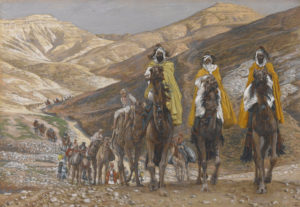
“The Magi Journeying” c.1890 by James Tissot
The Magical Magi and Their Journey
To start, what did chroniclers specifically record about the visit? There is a surprisingly limited amount of information, which has provided ample opportunity for many interpretations and elaborations of the story. Bible passages describe “… there came wise men from the east to Jerusalem…”, they saw a bright star that led them to worship the baby, they found him with Mary in a house (not a stable) in Bethlehem, and at the end of the passage “… they presented unto him three gifts; gold, and frankincense, and myrrh…” (Matthew 2:.1 -12) And that’s all!
First, who were these wise men, whom we also known as Magi? This was the name given to priests in the ancient and widely spread religion of Zoroastrianism. Originating in ancient Persia, this religion is based on the teachings of the prophet Zoroaster and possibly rose as early as the 2nd millennium BCE. The priests practiced “magical” astrology and alchemy, so reportedly, they understood the meaning of the star that was said to guide them to the baby Jesus. The name survives today in words we use for “magic” and “magician”.
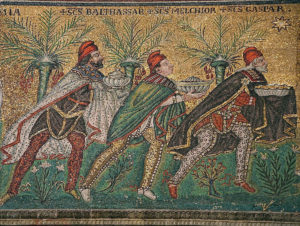
Byzantine mosaic of the Three Magi in Persian clothing, c. 565; Basilica of Sant’Appollinare Nuovo, Ravena, Italy (restored during the 19th century)
In the Old Testament, two passages have prophesies that tell how kings will travel with caravans of camels and bring gifts of gold and frankincense to the Messiah (Psalm 72:10-11 and Isaiah 60). These references gave rise to the identification of Magi as kings beginning around the 3rd century, and writers documented this by the 6th century. In art, crowns appeared in European paintings by the 10th century.
The information that the travelers came from the east was interpreted to mean the former Persian Empire, known as the Parthian Empire 2,000 years ago, and now centered on modern Iran and Iraq. Passages in the Old Testament also contain references to Ephah, Midian, and Sheba—regions that are now in Jordan, Saudi Arabia, and Yemen. Traveling from these distant regions on camels would have been logical.
Traditions state the Magi found baby Jesus by following the Star of Bethlehem. There is disagreement about whether this was a natural phenomenon (some, of course, accept that the star was a miracle). Astronomers have attempted to link the star to a comet or supernova, or a conjunction of planets, including Jupiter, Saturn or Venus. Many candidates have been considered, including a planetary conjunction proposed in 1614 by Johannes Kepler, the German astronomer. The dates of possible planetary events don’t seem to match other information, however, so no consensus is apparent. (For more information on this topic, the Wikipedia entry for Star of Bethlehem has some interesting data.)
Wherever they started, the journey of the Magi probably covered hundreds of miles and may have taken months, and perhaps as long as two years. The Bible states that the visit of the Magi was when the family was in a house in Bethlehem, so nativity scenes with the Magi incorporate some artistic license.
As for the number of Magi, although there were three gifts delivered, there is no direct information on how many delivered them. There might have been two carrying multiple gifts (since magi is plural)–or perhaps 12, as favored in Eastern traditions.
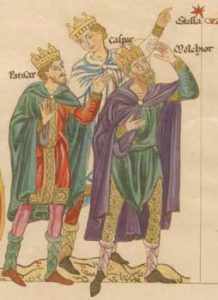
The Three Magi from Herrad of Landsberg’s Hortus deliciarum, 12th century
The names of the three individuals—Melchior, Caspar, and Balthazar—and details about them were first reported in Greek manuscripts in the 5th century. (There are many spelling variations for the names—including those in the mosaic and the painting, above.) Over time, the characteristics of the three evolved, eventually representing the three ages of adult men–old, middle-aged, and young. Melchior and Caspar are alternately reported as old, with white beard and hair, and whoever was oldest gave the gift of gold and the younger one frankincense. Beginning in the 12th century, the kings were depicted as representing the three parts of the known world. Balthazar became dark-skinned and coming from Ethiopia or another part of Africa, carrying myrrh; Caspar was from India and sometimes depicted with Asian features; and Melchior was from Persia.
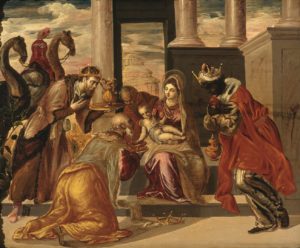
“Adoration of the Magi” by El Greco, 1568; Museo Soumaya, Mexico City
Gifts for a King
There is abundant symbolism around the gifts that the Magi carried. All three offerings were gifts given to a king and had diplomatic significance. Gold was a symbol of kingship on earth—following the tradition of many ancient cultures (including the Incas and their ancestors in the Andes Mountains.) Gold can also symbolize virtue. Frankincense is a gift for a priest and a symbol of prayer. Myrrh represents suffering. People recognized it as a symbol of death, and it was used as an embalming ointment and incense for funerals and cremations.
Frankincense and myrrh are both aromatic resins, obtained by tapping the interior sapwood of tree species that grow on the Arabian Peninsula and in northeastern Africa. Frankincense is from trees of the genus Boswellia, and myrrh is extracted from a species of the genus Commiphora. Both were used in incense and perfumes and were an important “cash crop” that was widely traded. They were believed to have many spiritual and medicinal benefits and have been used for thousands of years.
Celebrations
The sacred holiday of Epiphany, typically observed on January 6, commemorates the visit of the Magi, and in some cultures, the baptism of Jesus. The story of the Magi bringing gifts to baby Jesus is probably the origin of Christmas gift exchanges. In past centuries, tradition attributed gifts to children as from the Magi. Over time, however, that practice has largely been replaced by Santa Claus (not nearly as magical, IMO).
Societies worldwide associate many traditions with Epiphany. My favorite is that of some South American countries, where children cut grass and place it in their shoes by the door or in a box under the bed for the Magi’s camels. Wonderful! Although—as you may know if you have been reading my posts for a while—I am especially partial to llamas, camelid cousins from the Andes Mountains. Still, the stories about the camels of the Three Magi, along with their journey and gifts, are captivating.
Please share this post! Also, please scroll down to the bottom of this page and leave your email address on my website. You’ll receive messages only when I publish a new post (about once a week) and my occasional newsletter. Join now to learn more about geology, geography, culture, and history.
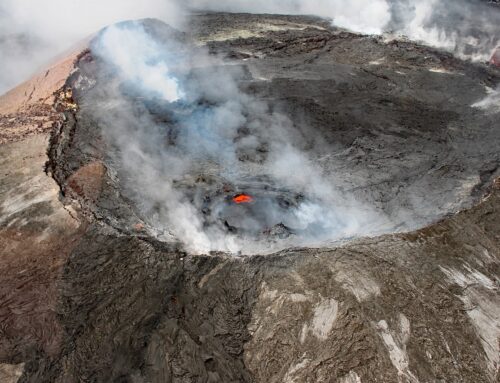
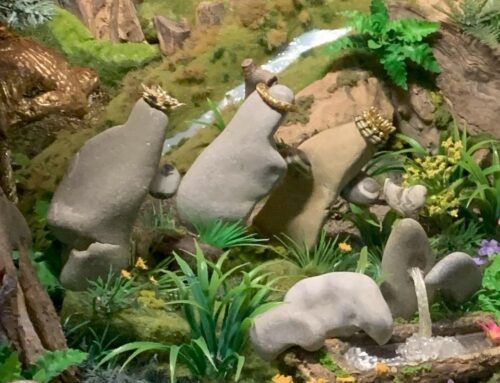

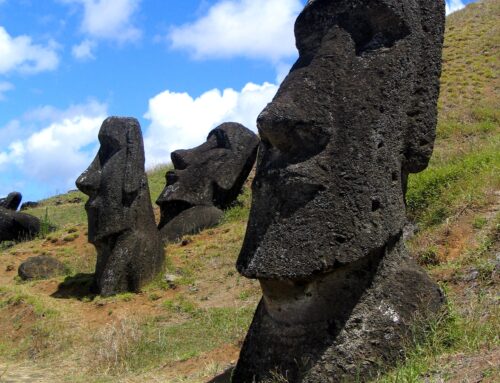

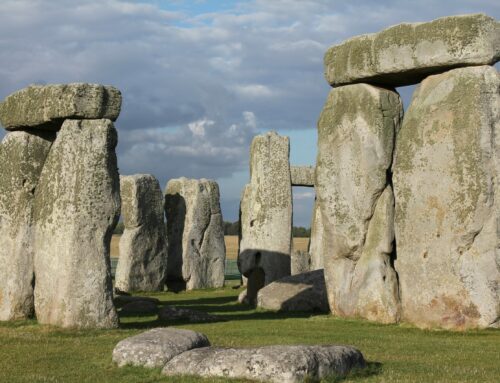
Roseanne, This is so very interesting for any time of the year, but pertinent for now, of course. One of the reasons I enjoy your writings is that you have a wide range of interests. Those varied subjects delight and surprise when your newsletter arrives in my mailbox.
Having said that, I’m not sure what your marketing plan is for your book, but keep in mind that, for me, (and your editor?) your diverse subjects are a strength and a joy for this reader.
Fascinating! Thank you.
Thanks, Wayne! As always, the research was great fun!
Thank you, Roseanne for this very comprehensive research you did on the Adoration of the Magi (or the Three Kings as we call them in Central-Eastern Europe , e.g. Dreikönige in Austria and Germany).
In return, please, look up this link:
https://www.magyarulbabelben.net/works/hu/J%C3%B3zsef_Attila-1905/Betlehemi_kir%C3%A1lyok/en/31092-Kings_of_Bethlehem
This is a poem by Attila József (1905-1937) and is known to most Hungarian children (and their parents and grandparents. My granddaughters have just learned it and are practicing it for Christmas.
I hope you’ll enjoy it.
Happy and peaceful holidays,
István
Thank you, István! I’m so glad you sent the link to this poem – it is nice to learn of the different gifts of the Three Kings, and also the traditional role of this poem in Hungary. Good to know!
Wishing you and your loved ones a Merry Christmas and Happy New Year!